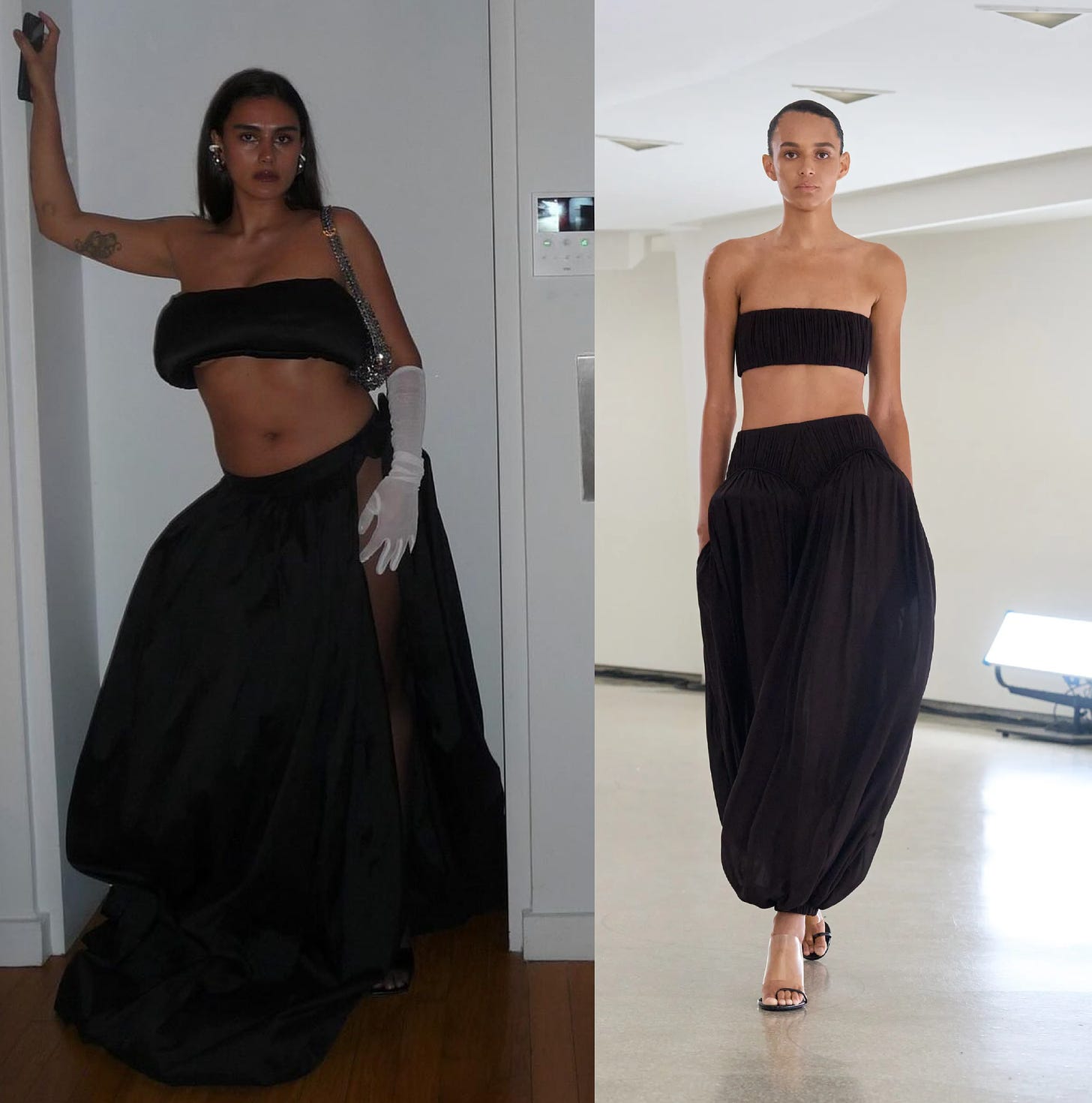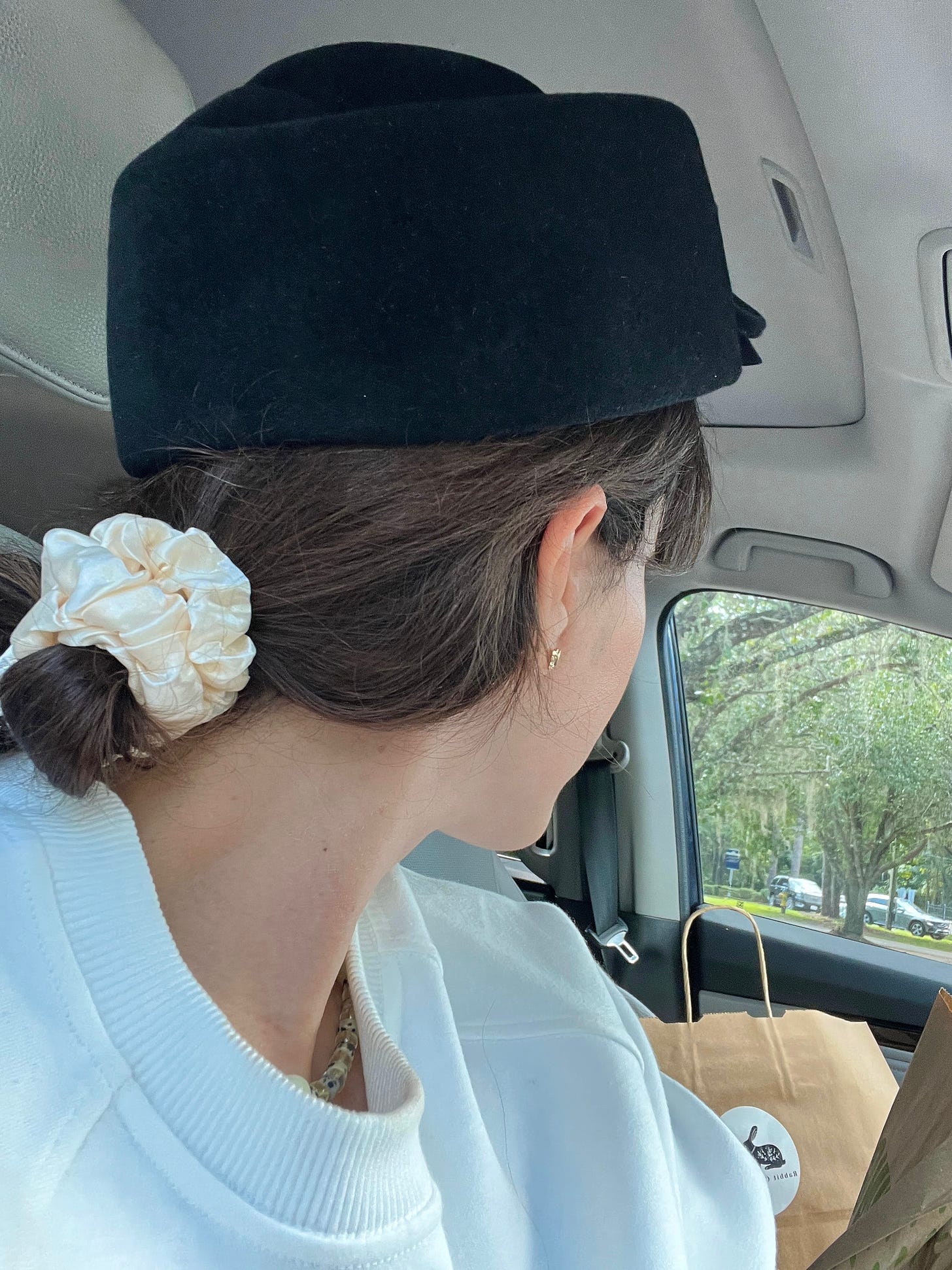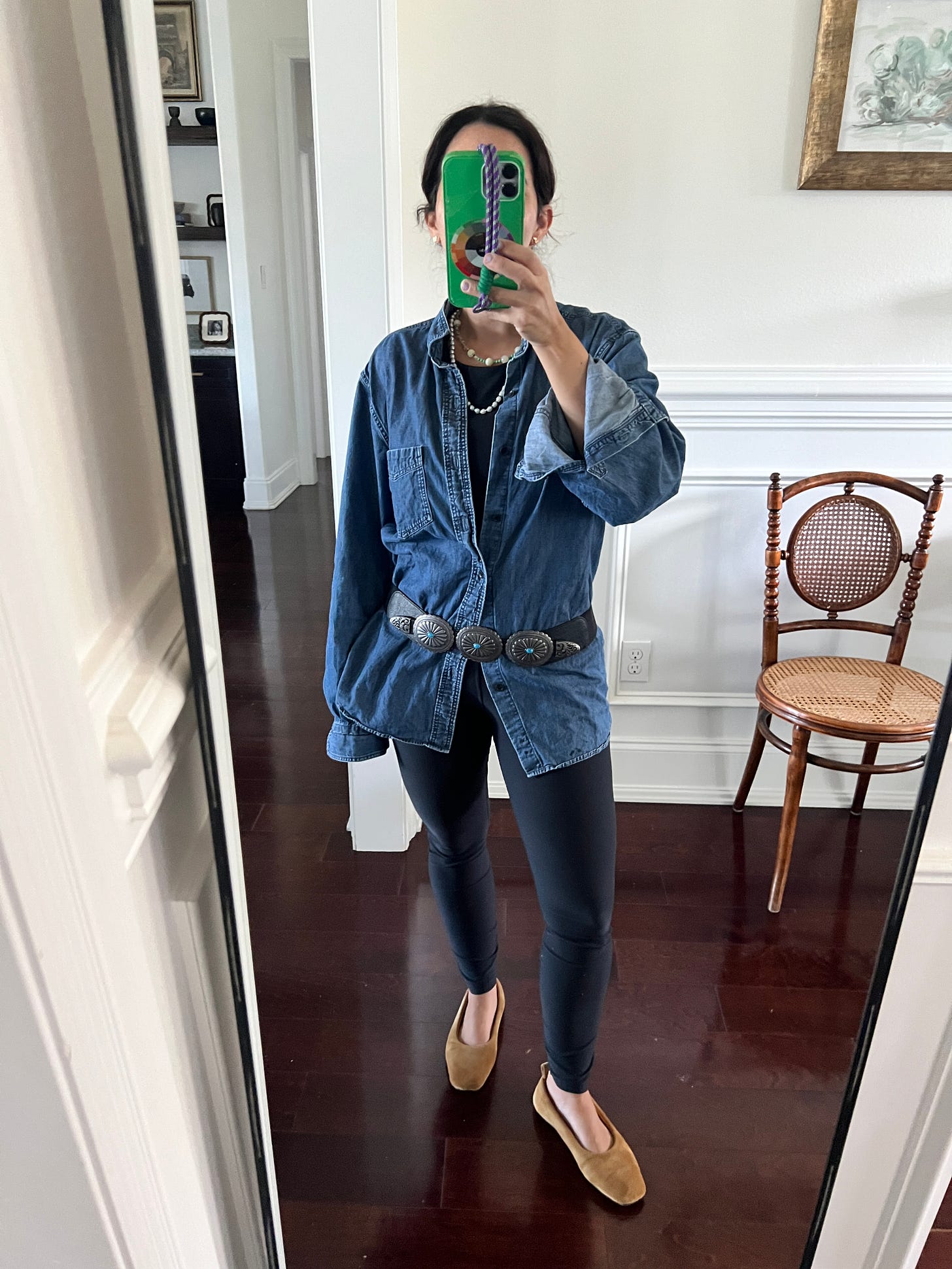

The other day I went to a store and picked up something that could have been pulled from one of my favorite fashion muse’s feed. On my way to the dressing room I felt the need to ruin all the fun by asking myself whether the impulse to try it on was about the item itself or about the comfort of knowing so-and-so would totally wear it.
Is this what I do now? Filter everything through someone else’s gaze? Live in a state of perpetual false consciousness where I don’t even know if my desires are even mine?
I observed the questions without jumping to easy answers or spiraling into guilt. I put the item back simply because I didn’t need it. Proof is that for the life of me, I can’t even remember what it was.
Of course, the questions didn’t end there. They never do. They expanded after the Prada show and conversations I’ve had with a couple of my internet friends about overexposure, what having style really means, and how much of it is a reflection of such overexposure. I thought about my mother-in-law who has great style and no social media, about the people I pass on the street unbothered by wrinkles on their shirts and, by and large, the whole fashion conversation.
A few days later while driving back from dropping off my kids, I had a thought that might not be the answer to my existential questions but did give me a new perspective. What if the woman wearing something I screenshot three times in a row is not influencing me at all, but instead reflecting a version of myself that I can’t always see? A mirror image that reveals the beauty I sometimes fail to recognize in myself but can see through her?

There’s something powerful in this, something I hadn’t considered in all the discourse about influence and overexposure. When I was younger, there was no instagram influencers, no one on TV that looked like me—at least not in the leading roles. No one who could reflect my mirror image, only unreachable ideals and conventional novela beauty. And sure, those ideals are still there—Instagram faces, etc.— but now there’s a diversity not only of faces, but of ways of embodying and relating to clothes. More importantly, now we get to choose who makes it into our moodboards and trick the algorithm to a certain extent. That was never an option before.


Should I stop feeling so guilty about following the women I follow if what they offer isn’t just a curated lifestyle and shoppable links, but a mirror in which I can recognize my own potential? If they are muses we return to, not necessarily to copy their outfits verbatim, but to tap into that feeling—that sense of possibility, that reminder of who we are when we struggle to see it ourselves? A reminder that we, too, are creative and can access that creativity if we put in the work and tap into our childlike curiosity?


And maybe that is the line between inspiration and influence. One pushes us to create, to act, to discover something in ourselves. Influence? It tends to fuel derivativeness. But even that’s not always a bad thing: great artists start with master copies before finding their own voice—they learn technique through imitation before arriving at something entirely their own. They learn the rules so they can brake them later on their own terms.


Is it possible that through imitating those we admire, we begin to see our own beauty, power, and creativity, and eventually stop needing any mirror but our own eyes?

Because at the end of the day, everything we admire in someone else, there’s a good chance we already have within us. And authenticity might just be an understanding that we exist in the context (🌴🥥) and that we are a product of the inevitable circumstances that preceded us, but also of what and who we choose to expose ourselves to.











Every question, every word…🥹 Philosophical, Existential, and yet personal, down to earth and empowering. That’s why I read you Laura. The clothes are the perfect illustration 🤌🏼🤌🏼🤌🏼🫂🫂🫂
So many things to screenshot 🥹🥹🥹 To remind myself. 🙏
I believe if you can control your emotions you are being inspired if not you are being influenced.